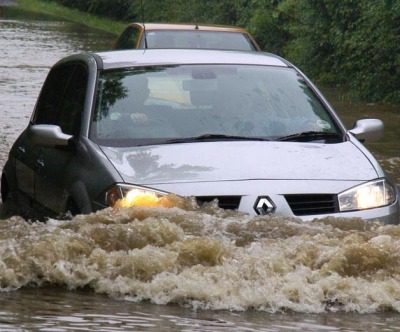
Floods are not fun if you get it wrong
In light of recent torrential downpours and localised flooding, Essex Police has the following advice/cautions to offer:
Floods & Standing Water
Only drive through water if you know that it’s not too deep, i.e. no deeper than 25cm (10 inches).
Drive slowly and steadily to avoid creating a bow wave.
Allow oncoming traffic to pass first and test your brakes as soon as you can after leaving the water.
Don’t driving through fast-moving water, such as at a flooded bridge approach – your car could easily be swept away.
Watch out for standing water, trying to avoid it if you can, and adjust your speed to the conditions.
- Driving fast through standing water is dangerous; tyres lose contact with the road and you lose steering control in what’s known as ‘aquaplaning’. If you do experience aquaplaning, hold the steering wheel lightly and lift off the throttle until the tyres regain grip.
- Driving fast through standing water is inconsiderate. Driving through water at speeds above a slow crawl can result in water being thrown on to pavements, soaking pedestrians or cyclists. You could face a fine if caught driving without reasonable consideration for other road users.
- Driving fast through standing water can cause expensive damage. The air intake on many cars is low down at the front of the engine bay and it only takes a small quantity of water sucked into the engine to cause serious damage.
- As you drive slowly through standing water, use a low gear so the engine revs are higher; water in the exhaust could otherwise damage the catalytic convertor.

